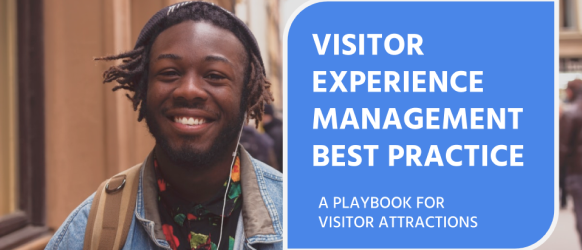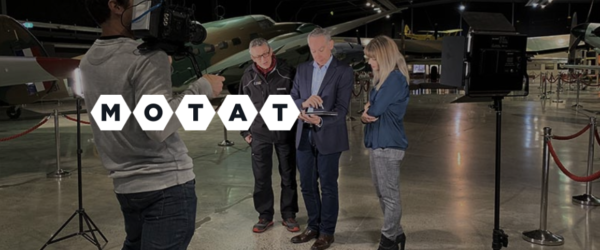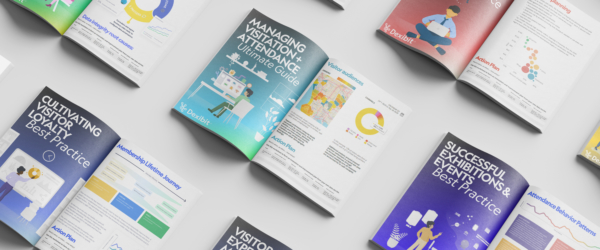Five seeds for artificial intelligence in museums
- In Artificial Intelligence
- Articles
- 5 min read
In a guest blog at the Centre for the Future of Museums this time last year, we called 2016 the ‘Year of musedata’. Indeed, it has seen an explosion of activity around big data and analytics in the cultural sector. As the year comes to a close and with another just around the corner, we again find ourselves looking at where an analytics enabled future will take the museum. The answer lies in the fact that technology is finding itself in new territory – the world’s computing power is no longer necessarily a constraint on imaginative possibility. Enter the age of artificial intelligence, a new era built on the backbone of the convergence of cloud enabled analytics, often as part of an Internet of Things (IoT) instrumented world.
Satya Nadella, CEO of Microsoft, refers to the challenge as his mission to ‘democratize’ artificial intelligence by putting advanced capability in the hands of many. Technology is moving away from spoon feeding computers with heavy user processing, towards independently adaptive cognitive computing. For the museum, this is an important trend to begin contemplating in strategy, a natural extension of the big data and analytics roadmap and a new foundation to lay for what some are referring to as the ‘post digital’ museum, once apps and the like are no longer the new and novel. Far from fearing a future reminiscent of a scene in Terminator, cognitive systems are positioning to augment human intelligence with more natural interfaces, less involved user processing overheads and the ability for applications to learn and reason. These elements cross various sub disciplines in the artificial intelligence domain with a variety of innovative possibilities into museum management, such as visitor experience, collections research and internal operations. Here, we investigate five possibilities seeding in the cultural sector.
- Bots
“How did Egyptians manage to preserve all this stuff?” That’s just one question on the minds of visitors at the Brooklyn Museum, where the Museum’s ‘Ask’ team of historians and educators are fielding numerous questions via a chat enabled app. Though a human is doing the responding for now, the project demonstrates how hybrid expert and cognitive enabled chat or voice based bots might service the museum visitor of tomorrow, whether that is online, in app, via social media or kiosk. The Hilton’s “Connie” puts a very mechanical face on that picture, offering concierge and wayfinding servicing a similar need to the many questions asked by museum visitors, with a walking, talking, front desk robot.
- Natural Language Processing (NLP)
In addition to supporting bot interactions or underpinning knowledge search (also underway at Brooklyn), the ability to leverage meaning, emotion and style into conversational understanding will have other applications in the museum. One example is in understanding visitor feedback or commentary as part of the museum’s transition to a two way conversation with visitors. Carnegie Museum of Art has already taken this a step further and visualized sentiment analysis data to light up the Gulf Tower, illustrating the mood of Pittsburgh via social media streams.
- Robotics
Carnegie’s innovations are just one example of how artificial intelligence can transition from enabling the visitor experience to being the subject of the exhibit itself. At the National Museum of Mathematics, a self organizing robot swarm provides yet another way for visitors to engage with an incredibly captivating ‘interface’ in a way that would equally serve education and artistic value alike. With wider applications of robotics ranging from assisting remote or accessibility audience experiences via telepresence through to robotic docent tours in Korea and Japan, robots are certainly making their presence felt in the museum field.
- Deep learning
Neural networks are tackling challenges previously not replicable outside human capability. Take vision for example, our ability to identify a sculpture, perceive color and form and even interpret meaning. On a computerized scale, this creates enormous opportunity to add value to collections data, particularly when forming new ways of navigation, search and networked relationships between objects. Cooper Hewitt’s early foray pairs a delicate pink porcelain pitcher of cream alongside a silk textile from France, given they both share the same Crayola hue. These kind of connections could even be formed between the interconnected collections of multiple museums or other institutions. Such was the inspiration for the winners of Tate’s digital innovation challenge, whose artifical intelligence application matches photojournalism images with the Museum’s collection whilst aiming to train this selection on human response. Those visual links could reach out to visitor inputs from their own world, either from their time inside the museum or outside its walls, empowering citizen science studies like those uncovering new species of geckos via the Natural History Museum in Los Angeles. Plus, aside from the more obvious applications for these technologies to improve the results of augmented reality in the museum, these sorts of new network pathways could inspire collection hopping visitor experiences too, like Pinterest’s recent rollout of Related Pin recommendations, which is doing just that. At Dexibit, our own interest is primarily in the other side of the lens, to see how deep learning behind facial recognition technology might be used for observing visitor demographics and even emotional response.
- Machine learning, reasoning and decisions
Much of our work at Dexibit is enabled in some way by machine learning. Using data mining, we look to recognize patterns across significant disparate data sets, cleaning up inherent noise such as museum staff audiences represented in analytics through to discovering the relationships inherent in visitor behavior. This might identify levers under the museum’s control, for example the impact of a digital strategy on visitation; or help understand contextual factors that the museum can respond to, such as the influence of weather patterns on visitor decisions. Increasingly, our focus is turning to leveraging insight for predictive uses too, taking the administrative work out of estimates and scheduling while increasing accuracy.
Coming back to Nadella’s challenge to democratize artificial intelligence, we see our future behind the scenes in the museum as leveraging a growing foundation of big data and analytics beyond dashboards and reports. Whether it is reasoning a forecast for a funding grant, diagnosing a slow month of visitation or analyzing the factors behind an exhibition scheduling decision, it’s time to put the musedata of 2016, and the bots of 2017, to work.
Want to learn more about Dexibit?
Talk to one of our expert team about your vision to discover your data strategy and see Dexibit in action.







